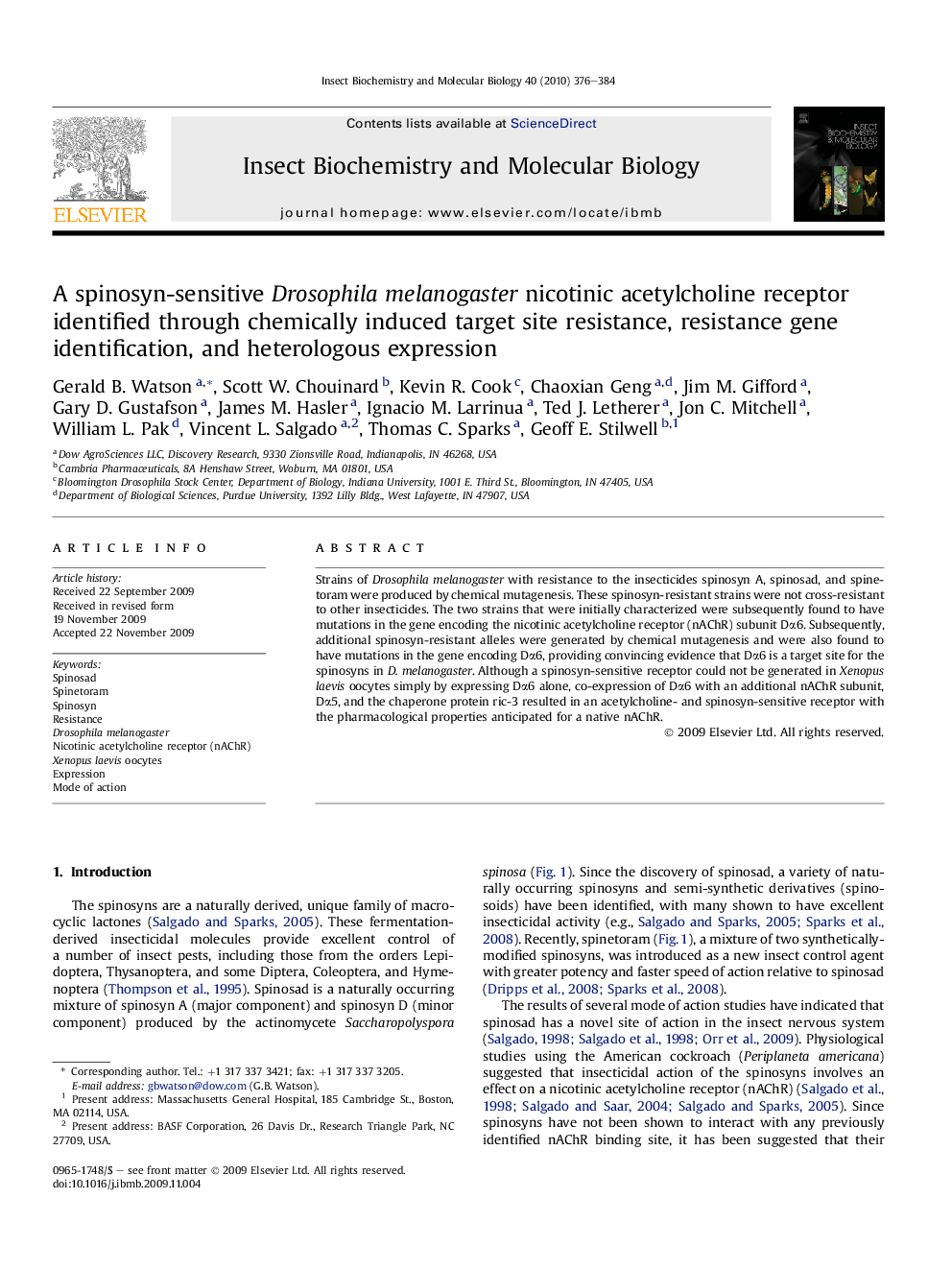| Article ID | Journal | Published Year | Pages | File Type |
|---|---|---|---|---|
| 1982536 | Insect Biochemistry and Molecular Biology | 2010 | 9 Pages |
Strains of Drosophila melanogaster with resistance to the insecticides spinosyn A, spinosad, and spinetoram were produced by chemical mutagenesis. These spinosyn-resistant strains were not cross-resistant to other insecticides. The two strains that were initially characterized were subsequently found to have mutations in the gene encoding the nicotinic acetylcholine receptor (nAChR) subunit Dα6. Subsequently, additional spinosyn-resistant alleles were generated by chemical mutagenesis and were also found to have mutations in the gene encoding Dα6, providing convincing evidence that Dα6 is a target site for the spinosyns in D. melanogaster. Although a spinosyn-sensitive receptor could not be generated in Xenopus laevis oocytes simply by expressing Dα6 alone, co-expression of Dα6 with an additional nAChR subunit, Dα5, and the chaperone protein ric-3 resulted in an acetylcholine- and spinosyn-sensitive receptor with the pharmacological properties anticipated for a native nAChR.
